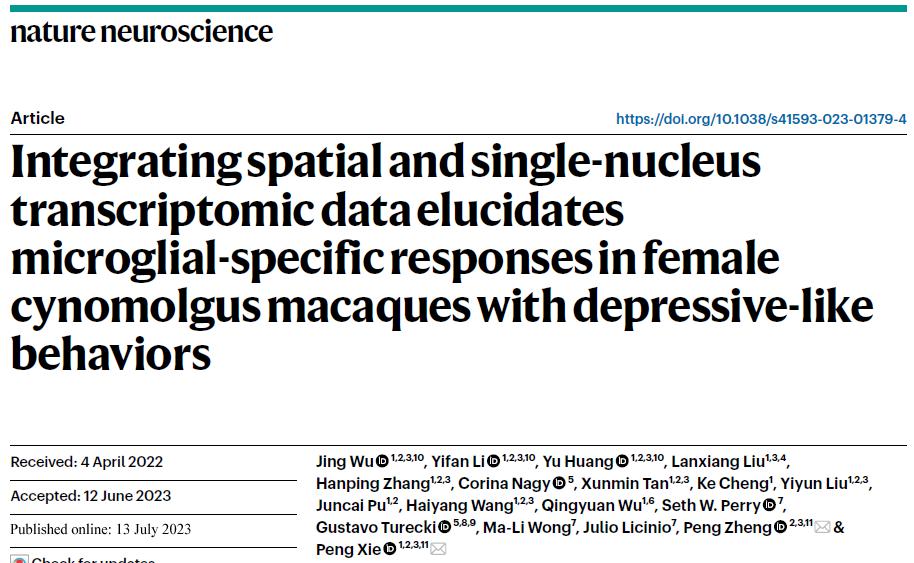Recently, the neurology team of the hospital published the latest research results ‘Integrating spatial and single-nucleus transcriptomic data elucidates microglial-specific responses in female cynomolgus macaques with depressive-like behaviors’ online in the internationally renowned journal Nature Neuroscience. The team discovered a specific subtype of microglia associated with the depressive phenotype and highlighted the potential regulatory functional regions in the prefrontal cortex space, based on the low-grade monkey model of depression. This finding offers a new target for targeted intervention in depression.

Depression is a major brain disease that endangers human health. Social pressure is an important factor that causes depression, but its underlying molecular mechanism still needs to be clarified. Cynomolgus monkeys are important vectors for studying emotion and cognition. In the early stage, the team established a behavioral coding system in monkeys and found that some low-grade female monkeys showed depression-like behavior, which effectively mimics the development of the disease in human female depressed patients under long-term chronic stress.

(Figure) Cell types and molecular regulatory regions in the prefrontal cortex associated with depression phenotypes
The present study successfully achieved the effective integration of ‘complex animal behavioral phenotype-cell type-spatial transcriptional stratification" and identified the potential mechanisms and regulatory targets, thereby providing a valuable reference for research in this particular field with its innovative analysis.
Original link:https://www.nature.com/articles/s41593-023-01379-4